Purdue University Northwest – Nils K. Nelson Bioscience Innovation Building
CannonDesign was tasked to design the dynamic Nils K. Nelson Bioscience Innovation Building for Purdue University Northwest located in Hammond, Indiana.
As STEM and health career pipelines continue to grow, higher education institutions are responding with dynamic facilities for interdisciplinary study that not only prepare students for future opportunities, but serve as hubs for collaboration and engagement in the present. Purdue University Northwest’s 68,000-sf Nils K. Nelson Bioscience Innovations Building (BIB) is a building at the leading-edge of this trend, uniting the school’s College of Nursing and Department of Biology, incorporating cross-disciplinary skills labs adjacent to public spaces so all students can experience the innovative culture.
The building is organized around a three-story lobby and a grand staircase that weaves people and space together. Every classroom and research lab that faces the central stairwell and lobby has a glass wall for visual connections. Nursing students are “on display” as they work on highly advanced mannequins, and researchers conduct lab work while passersby look on.
To give students true-to-life experiences, the building includes entire sections designed to look like physicians’ offices, acute care facilities and research labs, with monitoring stations and debriefing rooms situated right next door or across the hall. To provide more social space for students, the team implemented a scaled-down approach to staff offices, featuring a combination of private offices, open workstations, micro-offices and adjacent enclave rooms—offering right-sized settings for every type of work modality.
Key sustainable design decisions—such as utilizing low-VOC emitting materials, an energy efficient exterior envelope and low-energy use lighting—are engrained in the building design. They are enhanced by an incredible introduction of daylight into learning and workspaces and material transparency giving sight to academic and research programs in action. The circulation spines incorporate a continuous flow of group study and individualized heads-down space, which embeds the building as a campus amenity where students, staff, and visitors pause to think, relate and linger. The building’s agile planning and expression of modular structural and MEP systems ensure an educational environment ready for future growth.
Architect: CannonDesign
Photography: Laura Peters

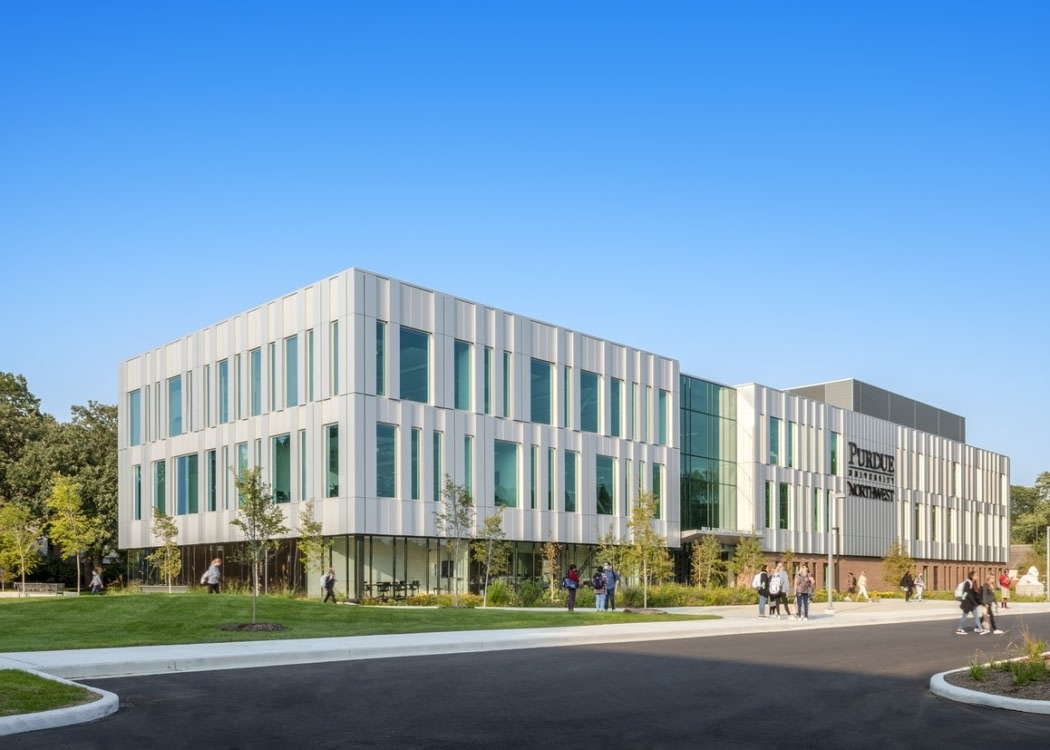
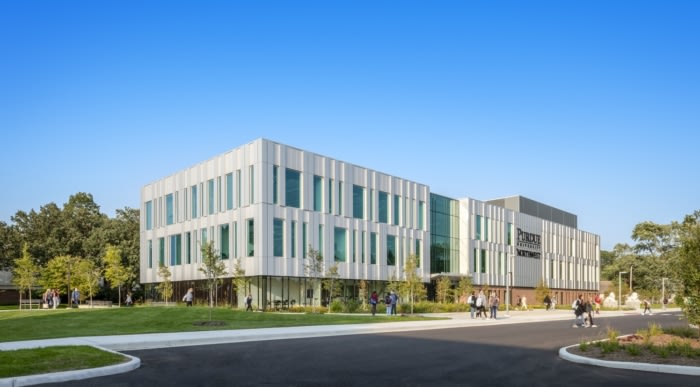
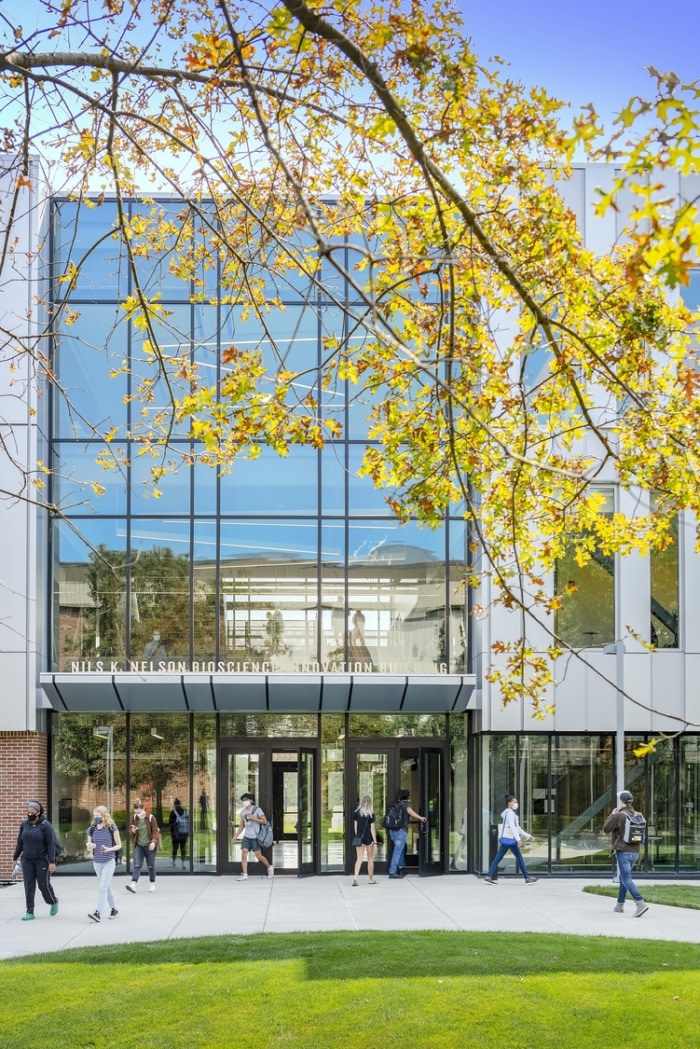
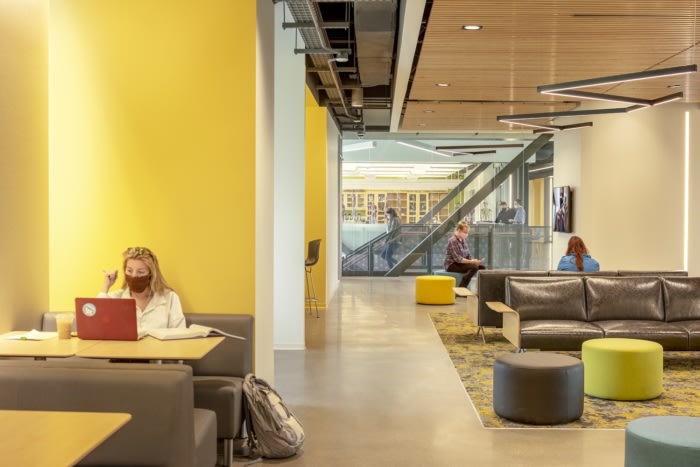


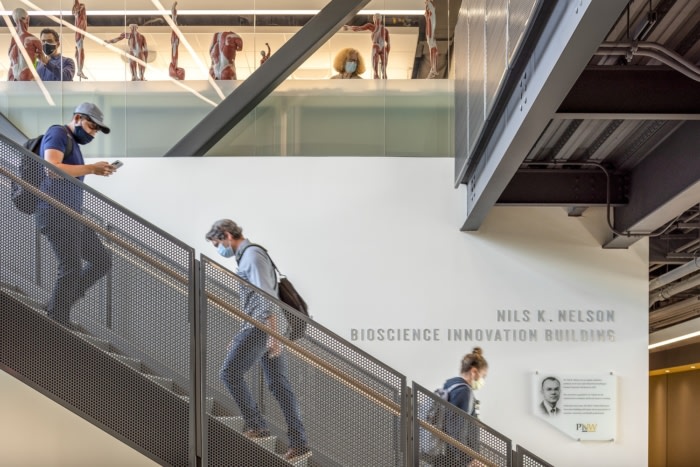



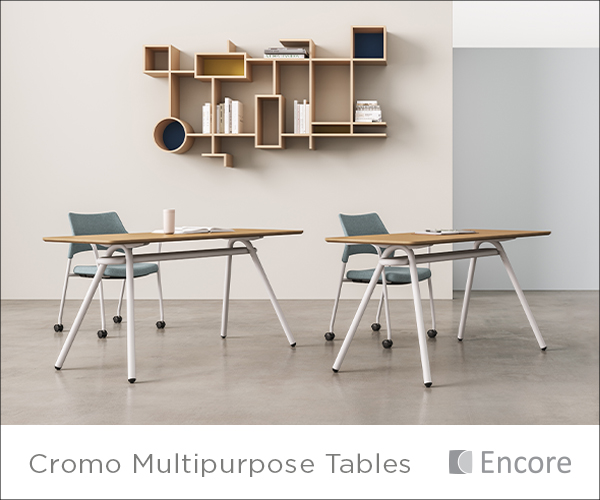
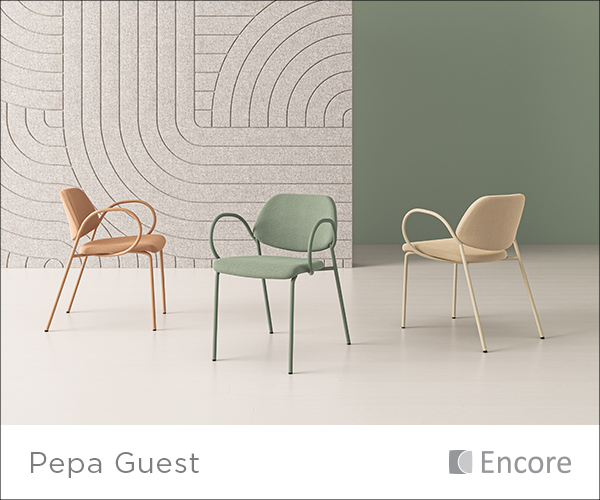






Now editing content for LinkedIn.